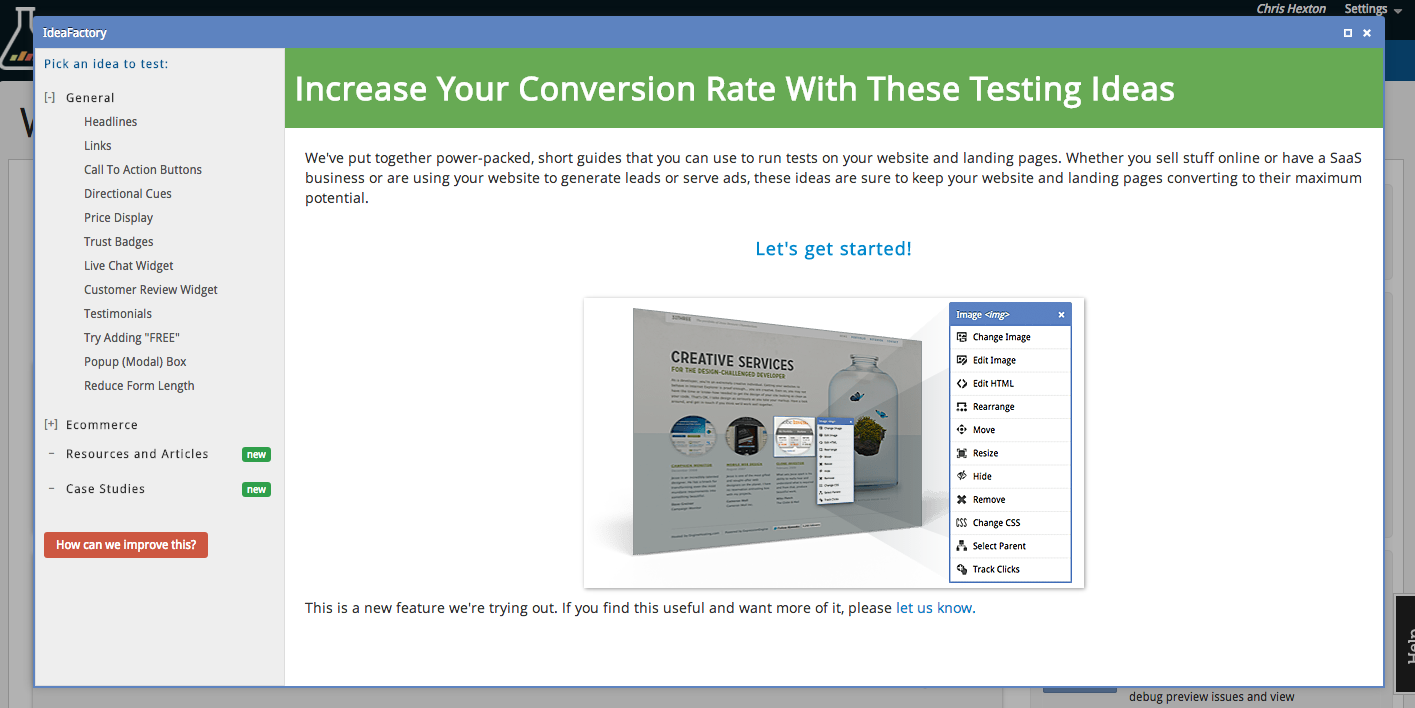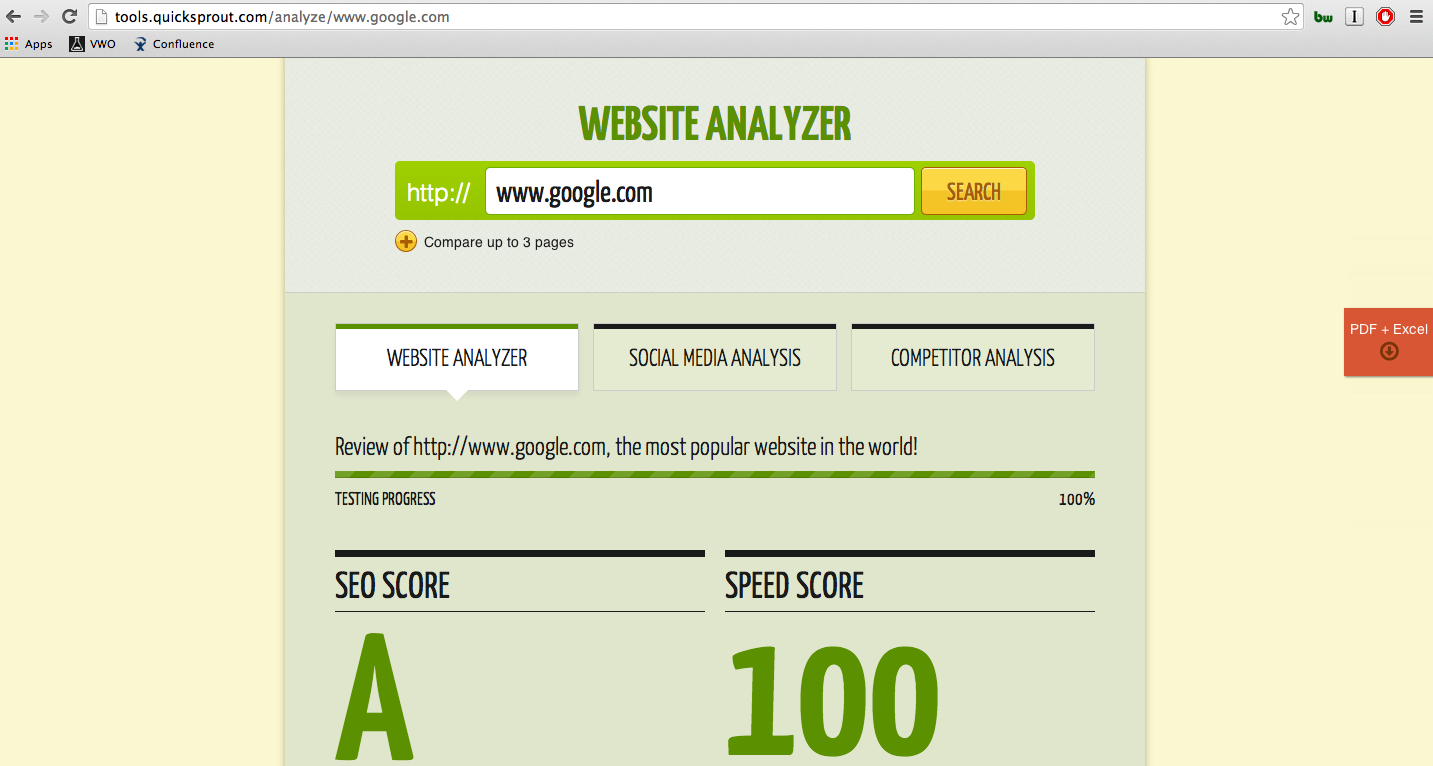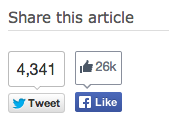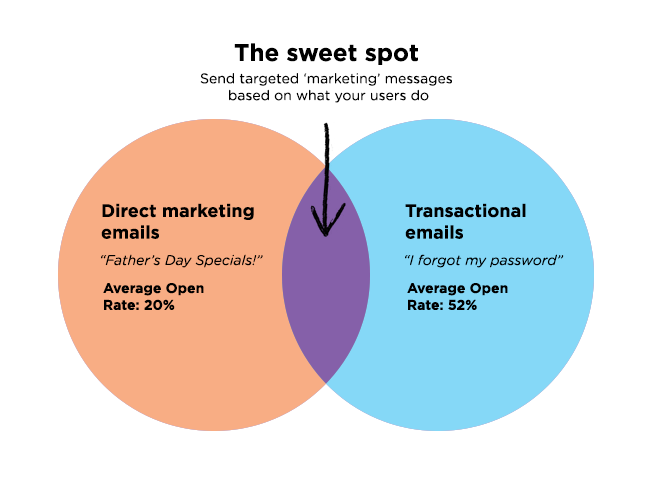Less Effort, More Epic: Produce Better Content And Win
-
UncategorizedUpdatedPosted:
On this page
Creating content that gets shared is super hard.
If it was easy we’d all have a million uniques a month, right?
Learning a few tips and tricks to help you ensure each and every piece of content you put out has an impact will make your blog and email marketing much more powerful.
Here are 5 tips you follow every time you’re creating content to ensure that it has every opportunity to take off.
1. Use real, hard data
Visual Website Optimizer have had amazing success with their blog, right from the word go.
Founder Paras Chopra has consistently shared success stories from customers that share real details. Take just these last few posts:
- Banner Displaying Top Deals Increases eCommerce Engagement by 105%
- One simple tactic that will always increase engagement – in this case by 40%
- Eliminating Customers’ Fears with a Trust Badge Increased Sales by 32%
This level of openness is very rare and, when VWO launched, it was unique to share such candid and practical tips on A/B testing.
Another fine example of the power of using data is the individual A/B testing guides that VWO launched inside their dashboard last year:
Each of the A/B test ideas in this guide has a detailed explanation of what to do and the facts to back up why you should bother.
Sharing statistics and hard data is one of those things that stands out every single time.
Buffer’s ‘Open’ blog, where they share all of their internal metrics from their run rate to their staffs’ salaries to their blog statistics, has been a huge hit because it is so candid. It breaks the mould.
This openness is absolutely killer when it comes to creating content that is talked about and shared. In short, it’s a shortcut to the ‘epic content’ you always hear about.
A final example comes from GrooveHQ, whose Founder Alex Turnbull has been blogging weekly about their journey to $100,000/month revenue.
A true look inside a growing SaaS business, Alex puts it all on the line and, in doing so, has garnered over 5,000 subscribers in mere weeks, the following of a huge list of influencers and a huge amount of respect from his target market. [external_quote the_quote=”Sharing your experience and the lessons you’ve learned can be incredibly valuable” image=”/wp-content/uploads/2013/12/alex-t.png” name=”Alex from Groove” link=”https://groovehq.com/blog/in-five-weeks”]
Take away: Share real data. Maybe it’s success stories from your customers, maybe it’s your own internal data. Whatever it is, customers love reading about numbers and they love the hard facts to back up your claims.
2. Build something practical
Neil Patel recently blogged over on QuickSprout that he believes “creating tools can be a better investment than creating content”.
Why?
They stand out. You’ve probably seen Moz.com’s great Open Site Explorer and HubSpot’s Marketing Grader.
Neil recently released his own tool, the SEO Analyzer, giving visitors the power to rate the SEO of their own site and get a list of things that need adjusting. Needless to say the tool is genuinely practical.
Upon it’s release Neil revealed that the bounce rate on his blog dropped from 75% to 63% and the average visitor now stayed on the site for over 3 minutes with almost twice as many page views.
The tool also drew in new readers as it was share-worthy – the tool was something that readers could not only use but wanted to talk about.
If you’re looking at ways to grow your audience and increase your conversions then building a free tool is certainly a form of ‘epic content’ that nails it.
Neil’s top tips for getting this right:
- Build for your audience! Don’t focus on yourself: do research and ensure you’re building something that people actually want.
- Wireframe first. Use wireframes to get feedback and iterate until you’ve got something that your customers want.
- Release on the same domain. Having one domain is far better than two for SEO reasons. Release your new tool on your own domain and you won’t have to work as hard to drive traffic.
[external_quote the_quote=”Whatever you end up creating, make sure it is easy to use” image=”/wp-content/uploads/2013/12/neilpatelsidebar.jpg” name=”Neil from QuickSprout” link=”https://quicksprout.com”]
Take away: What could you take from your application or website and turn into a free tool that your audience will love? By sharing such a great resource you’ll improve the engagement of your current readers and get exposure to new readers as well.
3. Make it visual
Creating long, detailed, informative posts is important to set your blog apart but it can, at times, look like a huge wall of text!
Whilst your die-hard readers might hang on every word, every time, adding visual appeal to your content is guaranteed to make it more shareable.
Don’t make your audience think: the quicker it is to stomach, the easier it is to sharing 140 characters ;).
Content extraordinaire Gregory Ciotti recently shared how important it is to include graphs, images or other visual representations in content he puts together.
An example from Greg’s own writing is the inclusion of an image that quickly and humourously explains why customers really buy from your business:
Greg’s favourite example of all time comes from OkCupid. The OkCupid blog should be every content marketers’ inspiration.
Each and every post featured hand crafted representations of OkCupid’s vast hoards of data, like this:
…or this:
These sorts of visuals are what helped OkCupid get share statistics like this:
OkCupid’s blog posts were perfect for this sort of visualzation as they were dealing with a heap of data, but that doesn’t exclude you from doing something similar.
Putting some effort into your visuals can work for any content marketer.
Our first ever blog post featured this explanation of why trigger-based email marketing is so powerful:
This simple image got people talking, was shared widely and helped make this post one of our highest shared posts ever, even to this day.
Another alternative is to consider using media. Rand Fishkin’s Whiteboard Friday posts are a fantastic example of visual media taking pride and place.
Take away: invest time or money in creating visuals that represent the data or story you’re talking about in your content. If you’re after more examples, checkout the HelpScout resources page, the Wistia blog – chock full of awesome videos, and KISSmetrics’ fantastic, free, viral infographics.
4. Don’t rush the copy! The headline matters more than anything else
The headline that gets the most clicks isn’t the first headline you write.
Want to know how I know? Read this.
The team at Upworthy know exactly what they’re doing when it comes to writing headlines. Take this mind-blowing example:
Same content, different headline. 17x more effective! And we’re talking 17 million views here.
17 million!
When it comes to writing epic content the headline matters. There is no point writing something that absolutely no one is going to read, right? Particularly when you’ve spent 3 hours researching, 2 hours writing and and hour editing.
Zach Bulygo over at KISSmetrics shared his insights on writing a headline that works. There’s a ton of meaningful information in his post, but here are two points that make a huge difference:
- Lack of curiosity killed your page views: The thing that all great headlines seem to have in common is curiosity. A headline might be a question, it might be a list, it might just be a statement, but a great headline provides enough information to raise curiosity in your target audience’s mind (i.e. it’s not totally vague) but not enough detail for them to know the answer without reading the content.
- Know what makes your readers tick: Understanding what your audience cares about is the most obvious thing in the world but too many posts focus on the wrong things. To give you a head start, four topics that nearly always work are: money, controversial facts or findings, speaking up about the elephant in the room and the truth (see the stuff on Alex at Groove in part one).
The ultimate tip here is to test things. Buffer shared how you can scientifically write great headlines using the power of Twitter.
growth hacker is the new VP marketing.
— Andrew Chen (@andrewchen) April 27, 2012
Inspired by a post from Andrew Chen that describes the testing that led to his legendary post on growth hacking there is a trick or two we can learn here.
Take away: Don’t slap a headline on your post just before you publish and don’t go with the headline you had as a draft. Take 20 minutes to write out 25 headlines, A/B test them with whatever audience you have available and profit.
5. Train yourself like a warrior
CopyBlogger’s Demian Farnworth highlights the power that epic content can have as a marketing tool: the power to make your brand stand out and shine unique over your competition.
His advice is to consistently train yourself to get better at writing and writing well. His primary advice is to start by focusing on two things:
- Your actual competition: don’t worry about competing with the companies you want to compete with: focus on your competitors as your customers define them.
- Learn their strategy and stand unique: see what your competition is doing and learn from it. How does your content stack up against theirs? How are they achieving their goals?
Demian then outlines a practical process to actually focus and get better at writing good content.
- Read like mad – You should read everything you can on your niche and the topic areas you cover. Epic posts come when ideas accumulate to form a coherent, unique viewpoint. The only way to get this is to absorb.
- Take notes – Take notes! Always take notes for future posts in a book or in digital form. Collect facts and reference points and come back to these at a later date.
- Be the dumbest guy in the room – Surround yourself with people that are smarter than you and listen to them. Great ideas come from smart people.
- Study your niche – what are all your competitors doing? How can you beat them?
Take away: Learning how to write great quality content is hard. Practical advice is few and far between. Your own process will differ a little but Damien’s advice is sound. Ready, study and let it all come together in your mind before putting pen to paper!
Conclusion
These 5 points will help you form a checklist to follow when creating content that gets read and drives the conversions you want.
This isn’t easy: all of the tips and tricks here take time. The trick is ultimately to do your research and plan ahead.
Whether you’re creating an eBook, a new email campaign or a blog post you will be able to find some juice for growth with these hints.
What have you done recently to improve your content marketing? I want to know.
Want to send more personalized mobile and email messages to your users?
Learn moreCustomer story
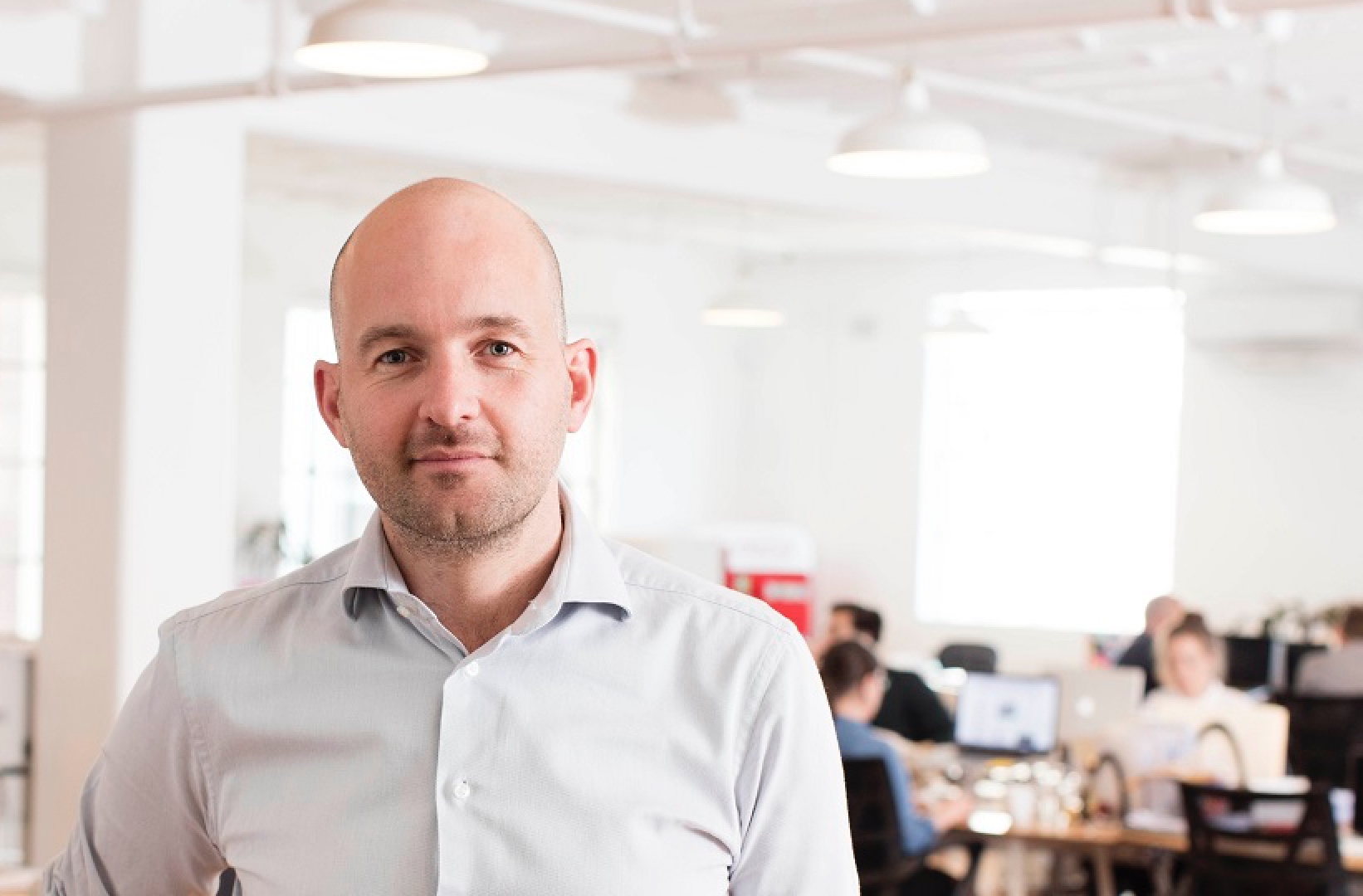
How UNO uses email marketing from the data warehouse to deliver personalized mortgage broking

